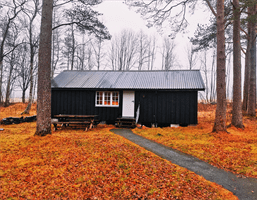
Tiny home trend: How to create a storage container vacation home
With most of us continuing to spend more time at home, we could all use a bit of an escape. Enter the tiny house trend – an affordable, creative way from homeowners to enjoy a “vacation property.”
Interested but feeling intimated or don’t know where to start? Here are some tips and ideas that can help you feel confident tackling this popular home improvement project.
Understand pros and cons
Shipping containers have many benefits – they’re durable, weather resistant and watertight. Best of all, they’re a more affordable alternative than a cottage. Recycling a used container is also great for the environment. Plus, they’re secure, stackable and just look really cool. One thing to consider is the indoor climate, as shipping containers can get very hot and very cold. You’ll also want to double check with your municipality to see if you need a permit.
Decide on your vision
What do you want your tiny home to be – a rustic cabin with a country feel to replicate your favourite cottage vacation? A luxury hotel room with tropical colours inspired by a treasured Caribbean getaway? A cartoon character-decorated spot for the kids to remind them of theme-park vacations past? The possibilities are endless, so dream big and plan small. Pinterest, blogs and social media are great sources for inspiration.
Prep for life in Canada
Whatever function your shipping container will serve, you’ll need the right materials so it’s cozy year round. Subflooring is essential for keeping floors soft, comfortable and feeling warm even in freezing weather. Most floors of shipping containers are cold metal, so you’ll want to find ways to make them soft and warm. Try affordable premium subfloors from Dricore, with easy-to-install floor panels that are perfect for DIYers.
Know when to call the pros
There’s plenty you can do yourself when it comes to converting a shipping container into a tiny home, including the insulation, subfloors, framing and decorating. But it’s smart to work with a professional for more technical tasks, like the electrical wiring, cutting holes for doors and windows and creating the foundation. Do things right the first time and you’ll save on money and stress in the long term.

Leave A Comment
You must be logged in to post a comment.